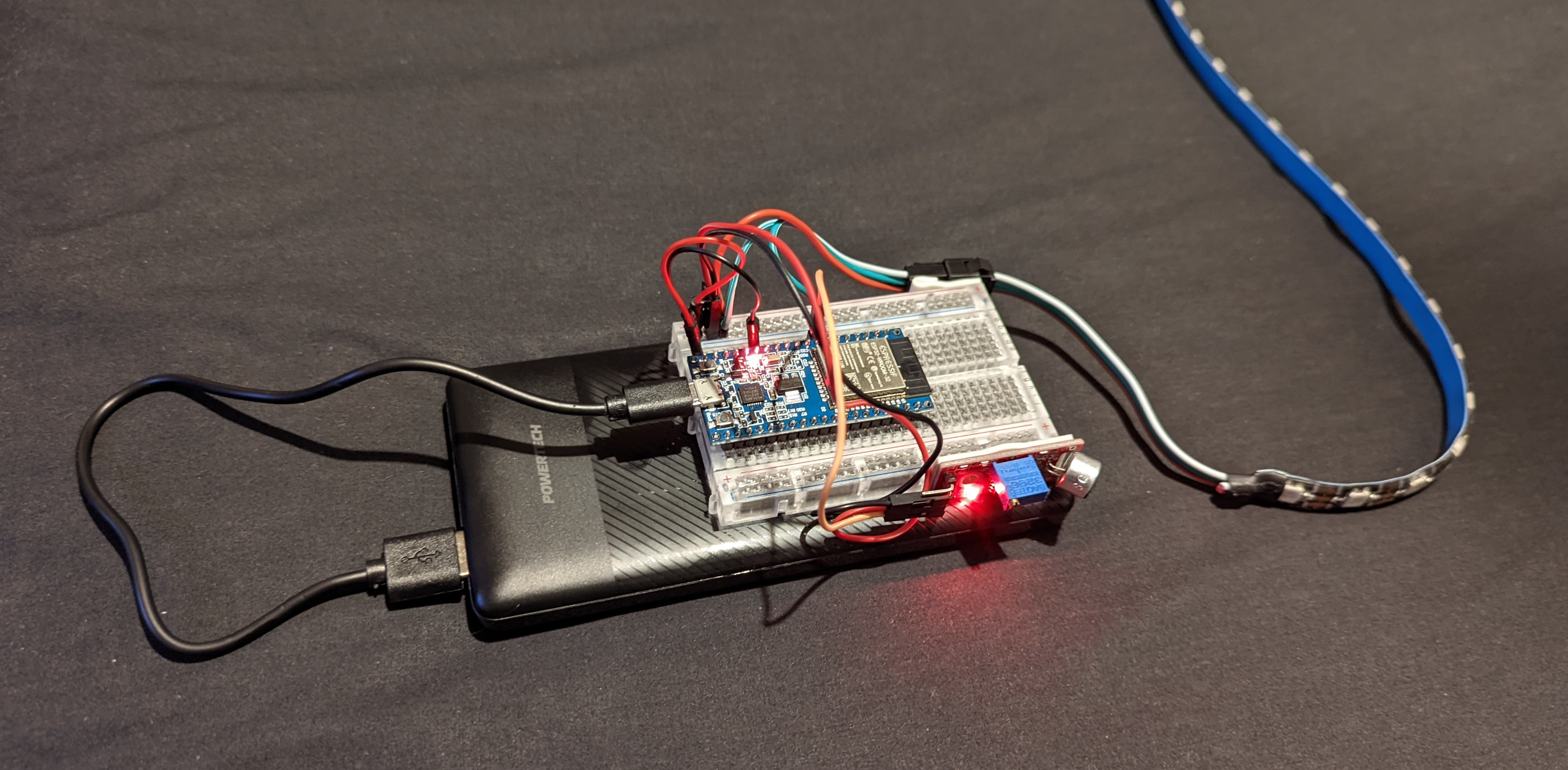Clap activated LED firework display for arduino-based micro-controllers.
An ESP32 has been used, but can be swapped out for simpler boards such as the Arduino UNO, nano etc.
In the demo below, the project is powered from a 10,000mAh power bank with an output rated at 5V, 3A. This output is able to support a light strip with a length of 144 pixels (actual amount 240), with pixel brightness set to 35.
demo.mp4
- ESP32 Board (Can be substituted with Arduino UNO, nano etc.)
- Microphone Sound Sensor Module
- 2m RGB LED strip (120 LEDs)
- Breadboard
Other equipment such as jumper cables, double sided tape etc. not included above.
This can be caused by a power supply problem when many lights are active at once. Use a multimeter to check whether the voltage drops significantly below 5V.
This can be resolved in one of the following ways:
- Replace the power supply with one that can provide a sufficient amount of current without too much voltage drop
- Lower the overall brightness of the strip (use
pixel.setBrightness(n)insetup) - Lower the maximum amount of worms to prevent too many lights being active at a time
- Reduce the length of the strip
The microphone sensitivity can be adjusted with a screwdriver via the potentiometer.
The module includes 2 LEDs. LED 1 (right side) indicates power, while LED 2 (left side) indicates a 'HIGH' digital signal.
The module should be calibrated such that LED 2 is off.
If LED 2 is on, rotate the potentiometer counter-clockwise just enough until the LED turns off.
If LED 2 is off, but does not turn on when making noise, rotate the potentiometer clockwise until the LED turns on, then rotate slightly backwards until the LED turns off again.
